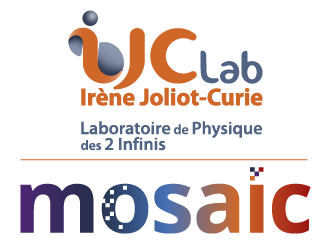All beam time access for research at ALTO is evaluated by the Program Advisory Committee (PAC) which meets typically once a year to evaluate proposals for experiments.
The next meeting of the ALTO PAC will be held at IJC Lab, Orsay on the 5th and 6th of October 2021 following the ALTO Users Group meeting on the 4th October. We currently invite proposals for beam time (or Letters of Intent) to be considered at this next PAC meeting. Beam time requests for the period of October 2021 to March 2023 will be examined. This includes the period dedicated to the nu-Ball2@Orsay campaign (see below for more details).
Proposals are due by September 5th, 2021 in electronic format with the cover letter. To submit a proposal you must first register here as an ALTO User, along with your collaborators.
The next PAC meeting will mainly consider applications for tandem high-energy stable beams. The low-energy radioactive beams part of the ALTO facility is currently undergoing an upgrade with comissioning of important new instrumentation forseen in 2021 and 2022 (COeCO, LINO, MLL TRAP, POLAREX). In this context the PAC may only evaluate proposals using radioactive beams which are considered to be particularly timely and significant. The list of available stable beams can be found here. If you require further information please don’t hesitate to contact the ALTO facility scientific coordinators.
The nu-Ball2 experimental campaign
This campaign involves the construction and deployment of a high-performance hybrid gamma-ray spectrometer at the ALTO facility, forseen to be running between march 2022 and march 2023. It will consist of three different geometries with approximate efficiencies at 1 MeV given:
- nu-Ball2 Germanium only (Ge 6.5%) – First half of 2022
- nu-Ball2 clovers/FATIMA (Ge 4.5%, LaBr3 2%) – First half of 2022
- nu-Ball2 clovers/PARIS (Ge 4.5%, phoswich 14%) – From september 2022
In addition the following couplings will also be possible:
- The OUPS (Orsay Universal Plunger System) plunger
- The OPSA (Orsay Particle Scintillator Array) charged particle detectors
- The CORSET fission fragments detection system
- The LICORNE directional neutron source
- The Warsaw HIL DSSD
- Ionisation Chamber(s) with spontaneous fission sources
For more precise information about the various geometrical configurations and couplings to the various devices please contact the following people:
- nu-Ball2 Ge only (Gabriel Charles and Joa Ljungvall)
- nu-Ball2/FATIMA (Jon Wilson and Matthias Rudigier)
- nu-Ball2/PARIS (Iolanda Matea and Adam Maj)
- OUPS plunger (Joa Ljungvall)
- OPSA charged particle detectors (Georgi Georgiev)
- CORSET (Iolanda Matea and Eduard Kozulin)
- LICORNE (Jon Wilson and Matthieu Lebois)
- Warsaw HIL DSSD (Jon Wilson and Pawel Napiorkowski)
- Geel Ionization chamber/SF sources (Matthieu Lebois and Stephan Oberstedt)
- FASTER Data Acquisition System (Matthieu Lebois and David Etasse)







